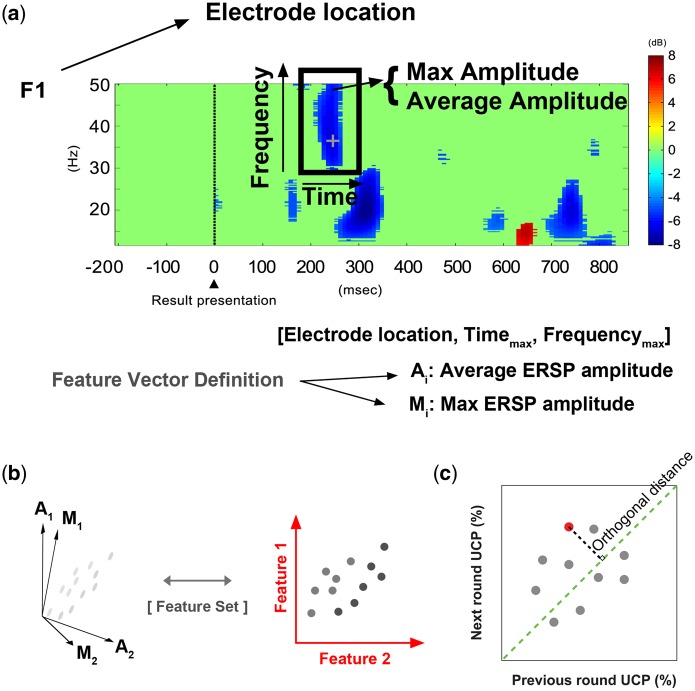Fig. 2.
An example of an EEG feature used to predict the subsequent free ride or cooperation decision. (a) The cross hair within the feature indicates the time and frequency of the maximum ERSP. (b) As depicted in the lower part of the figure, each feature vector was defined according to five types of information: electrode location, timemax, frequencymax, average ERSP amplitude, and max ERSP amplitude. When we tested prediction performance with a combination of two features (feature1 at electrode1, timemax1, and frequencymax1: [ERSPmax1, ERSPavg1] and feature2 at electrode2, timemax2, and frequencymax2: [ERSPmax2, ERSPavg2]), the information from the two features was concatenated in parallel (predictor: [ERSPmax1, ERSPavg1, ERSPmax2, ERSPavg2]).

